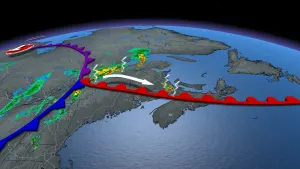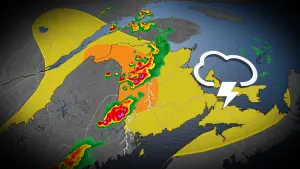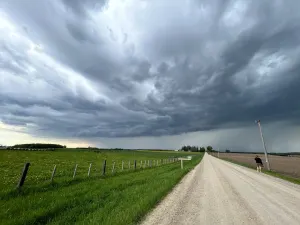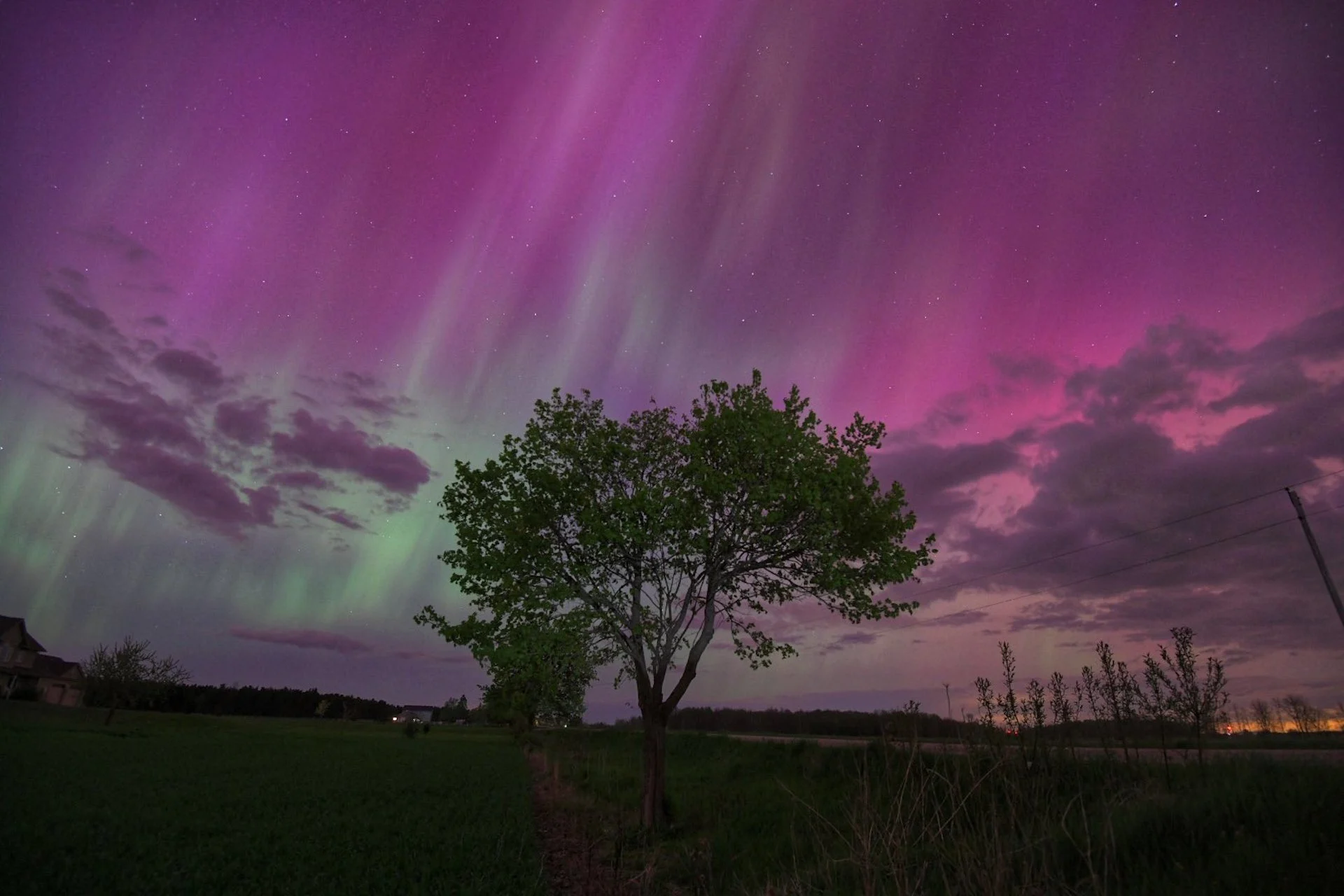
Once-in-a-lifetime northern lights dance across North American skies
An exceptional geomagnetic storm swept through Earth’s atmosphere on May 10, resulting in vibrant displays of the northern lights that were seen across North America and beyond
The forecast for a powerful geomagnetic storm on Friday panned out as anticipated, and then some, with magnificent showings of the northern lights that stretched across the skies over North America.
The storm ended up getting a last-minute bump to G5-level strength in the forecast, the maximum intensity, meaning the show was on in full force, according to the National Oceanic and Atmospheric Administration's (NOAA) Space Weather Prediction Center.
SEE ALSO: Blackout-causing 'super' solar storms happen more often than we thought
The G5 rating on geomagnetic storm scale is an extreme disturbance of Earth’s magnetic field.

The last G5 storm occurred on October 2003, resulting in power outages in Sweden and even damaged power transformers in South Africa.
That storm had ample cloud cover across Canada with a low-pressure system moving through the Great Lakes, limiting the northern lights visibility in parts of the country.
The disruption to Earth’s magnetic field is caused by coronal mass ejections (CMEs) off the sun's surface, which contain charged particles that move at thousands of kilometres per second toward our planet.
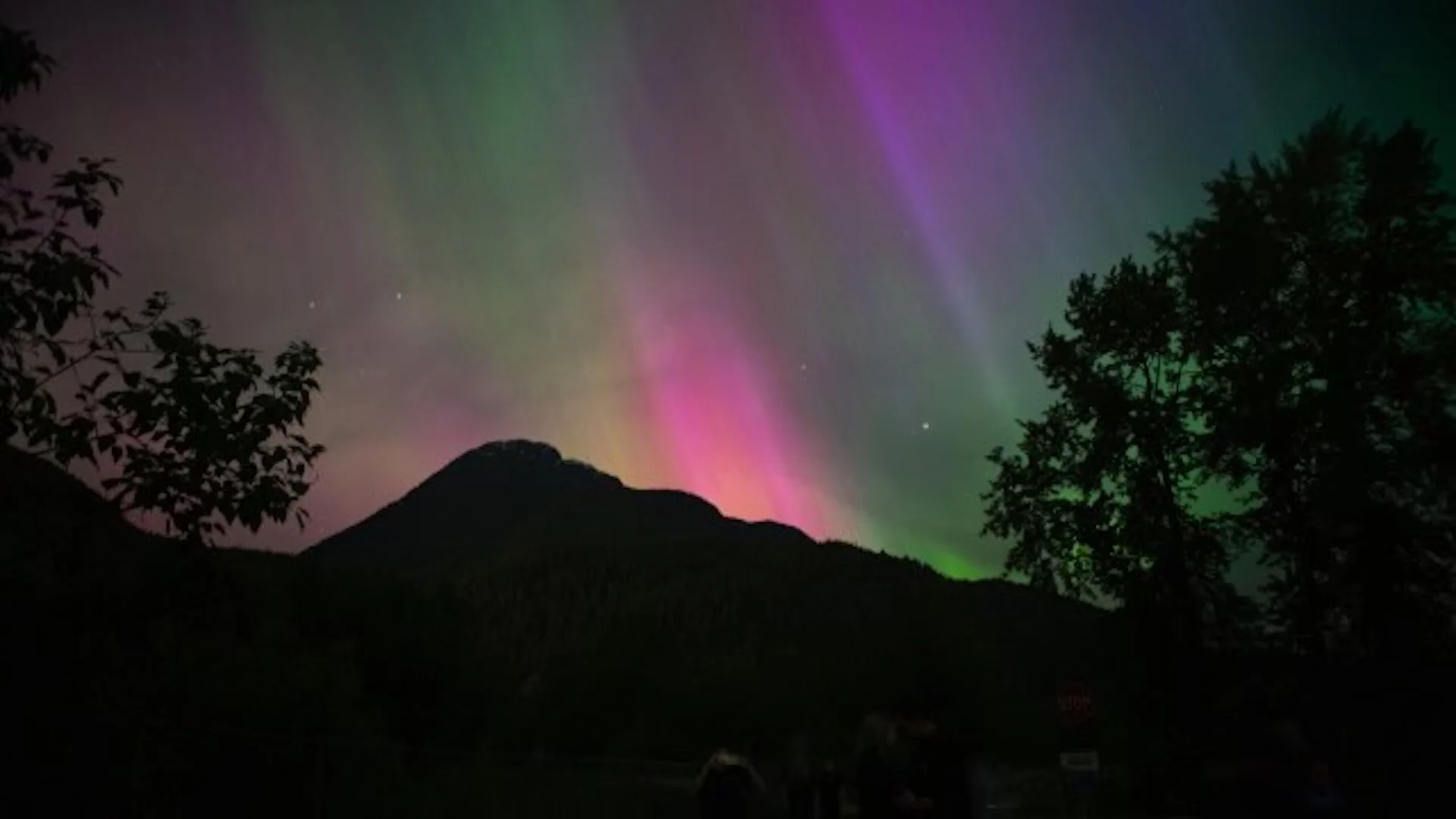
(Mia Gordon/The Weather Network)
We are currently in a solar maximum, which means a higher probability of large solar flares –– making these displays more likely.
Auroras reached the southern U.S., and beyond
The K-index, which ranges from 0 to 9 and features higher numbers correlating to conditions that may allow auroras to dip farther south in latitude, reached a rarified territory at 9.
At 9, that means auroras were visible across the southern United States, with the state of Florida even witnessing the northern lights in cities like Key Largo and Tallahassee.
Satellite imagery normally reserved for capturing low-light conditions like city lights and energy sources was overwhelmed by the dazzling display across North America:
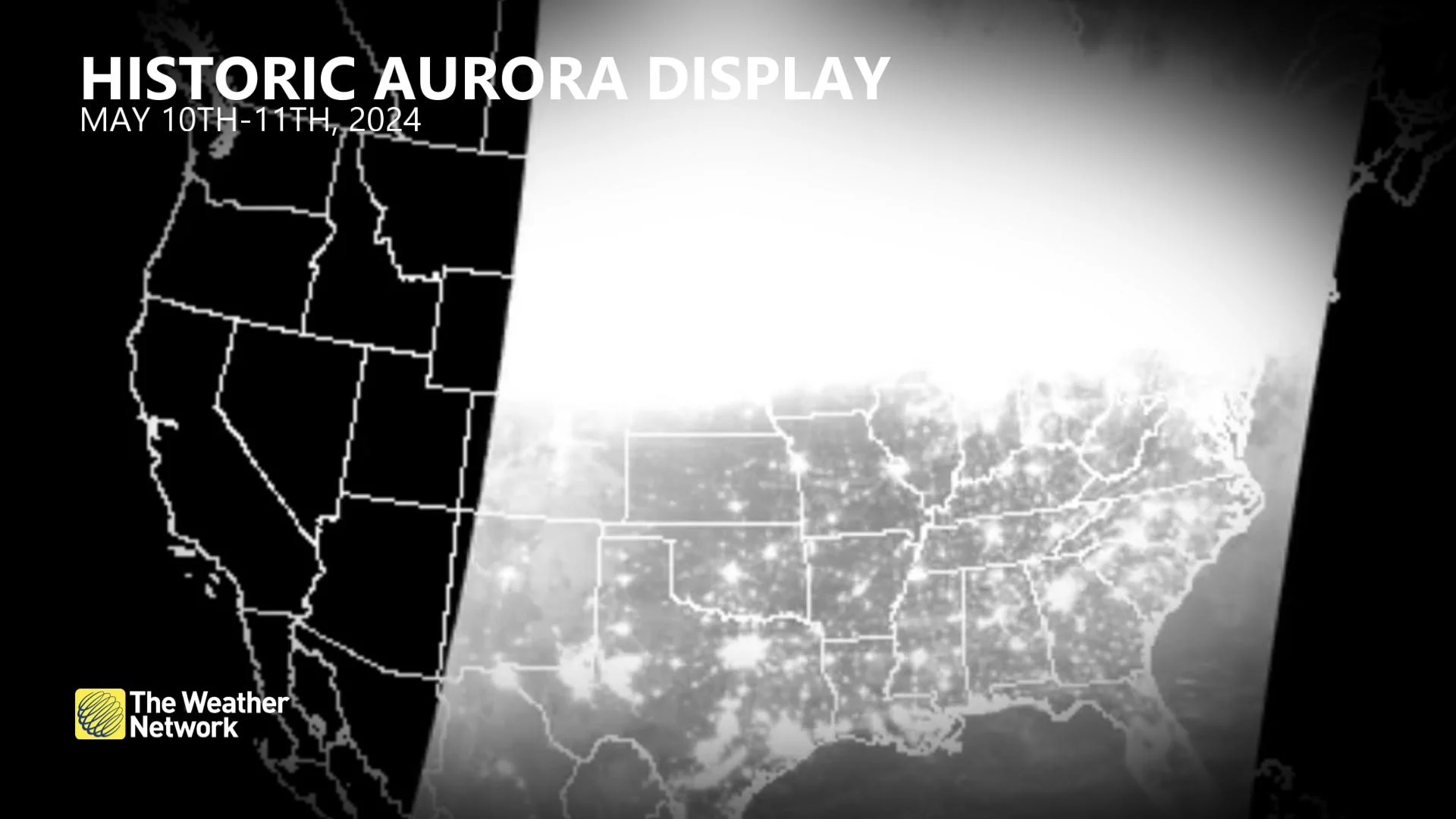
The good news is that there were no major disruptions reported to satellite and communication systems or power grids.
Storms of this calibre have been known to damage electrical systems on satellites, disrupt power grids and cause communication blackouts and global positioning system (GPS) issues with satellite navigation devices.
The northern lights were also highly visible in the Southern Hemisphere, including New Zealand, Australia, and Tasmania.
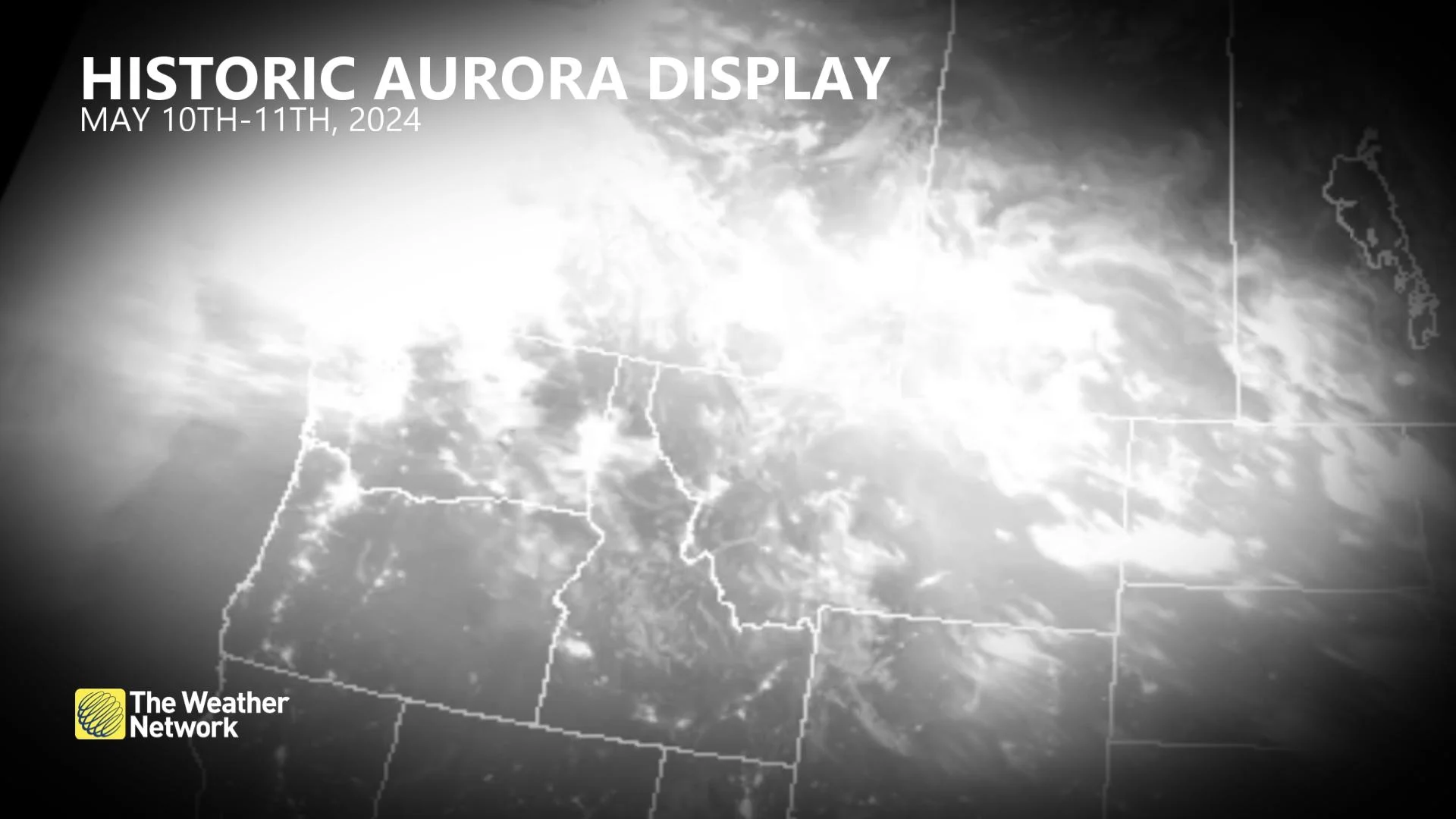
As of Saturday morning, the storm was still at G4 (severe level), so continued aurora activity is forecast over the next couple of days as strong solar flares continue to be emitted of the surface of the sun.
Forecast and cloud cover maps for Saturday night
We’re in the midst of the strongest, geomagnetic storm since 2003, with the second-biggest solar flare since 2017, so aurora activity will continue to be intense.
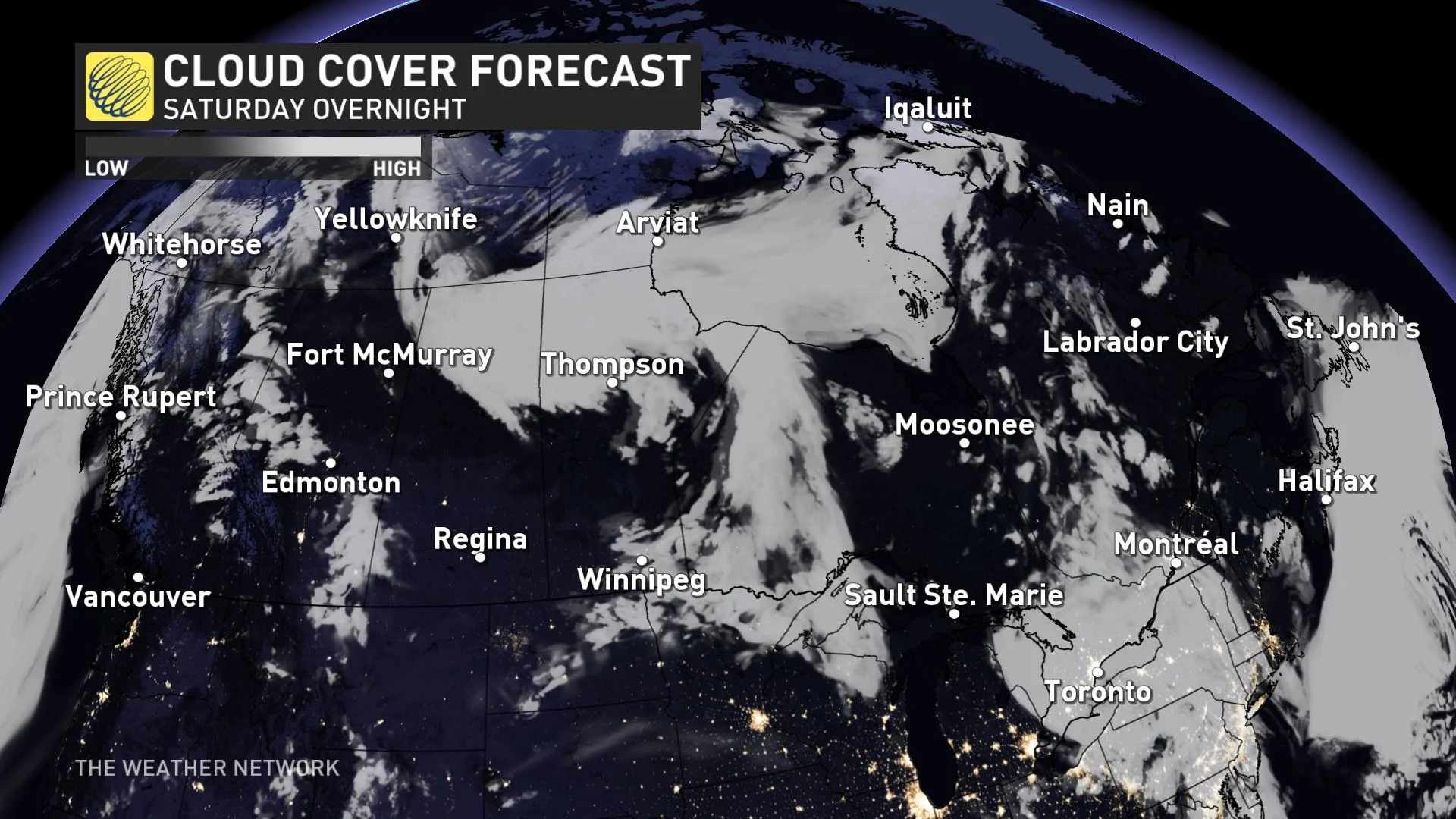
The northern lights can be highly variable and sporadic as the charged particles interact with Earth’s magnetic field and the upper atmosphere.
Visuals surfaced on social media
Once the G5-rated storm began, photos of the spectacular auroras surfaced on social media. Here is just a selection of what is currently making the rounds so far.
WATCH: Intense auroras light up Canada and beyond Friday night
With files from Tyler Hamilton, a meteorologist at The Weather Network, and Nathan Howes, a digital reporter at The Weather Network.







